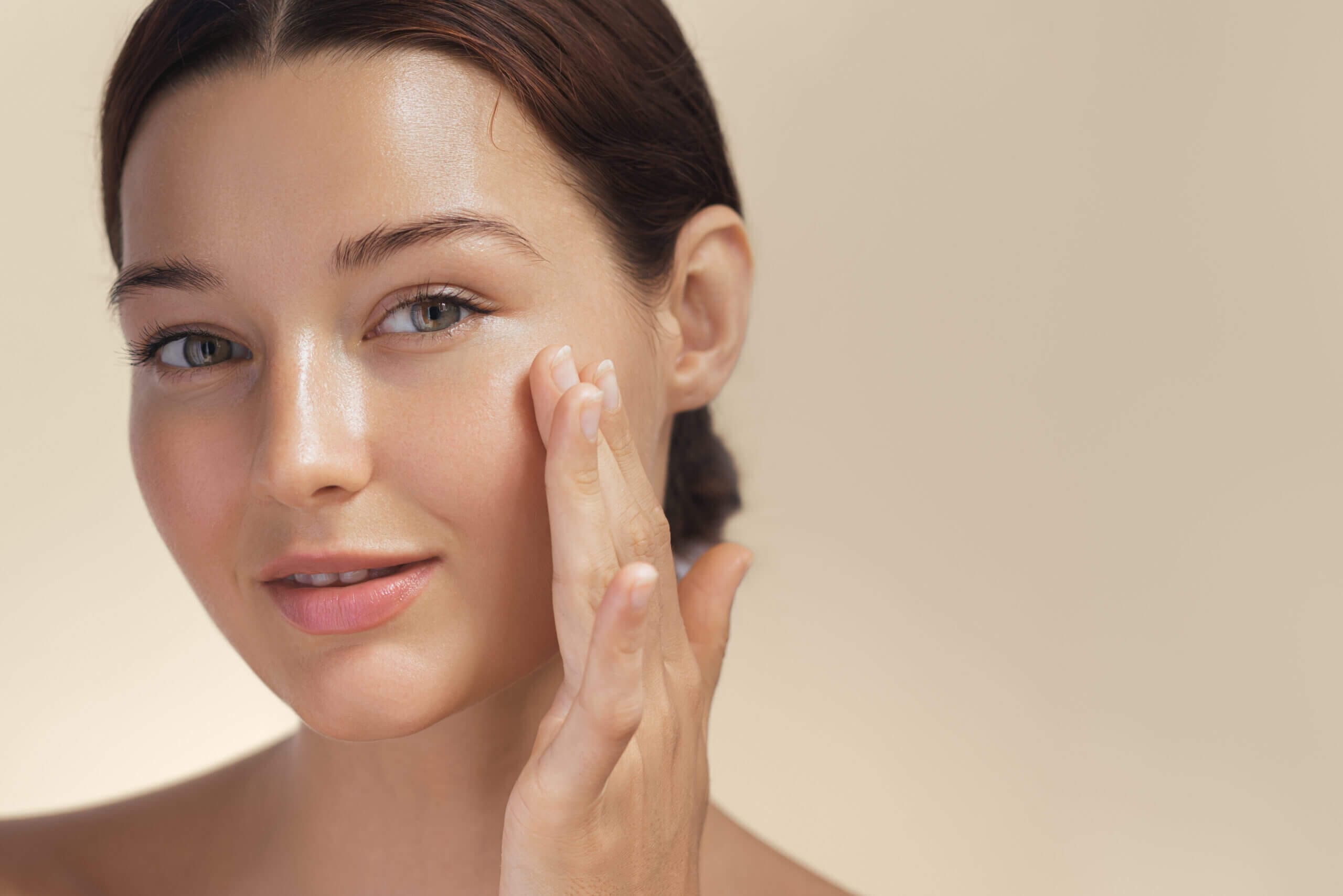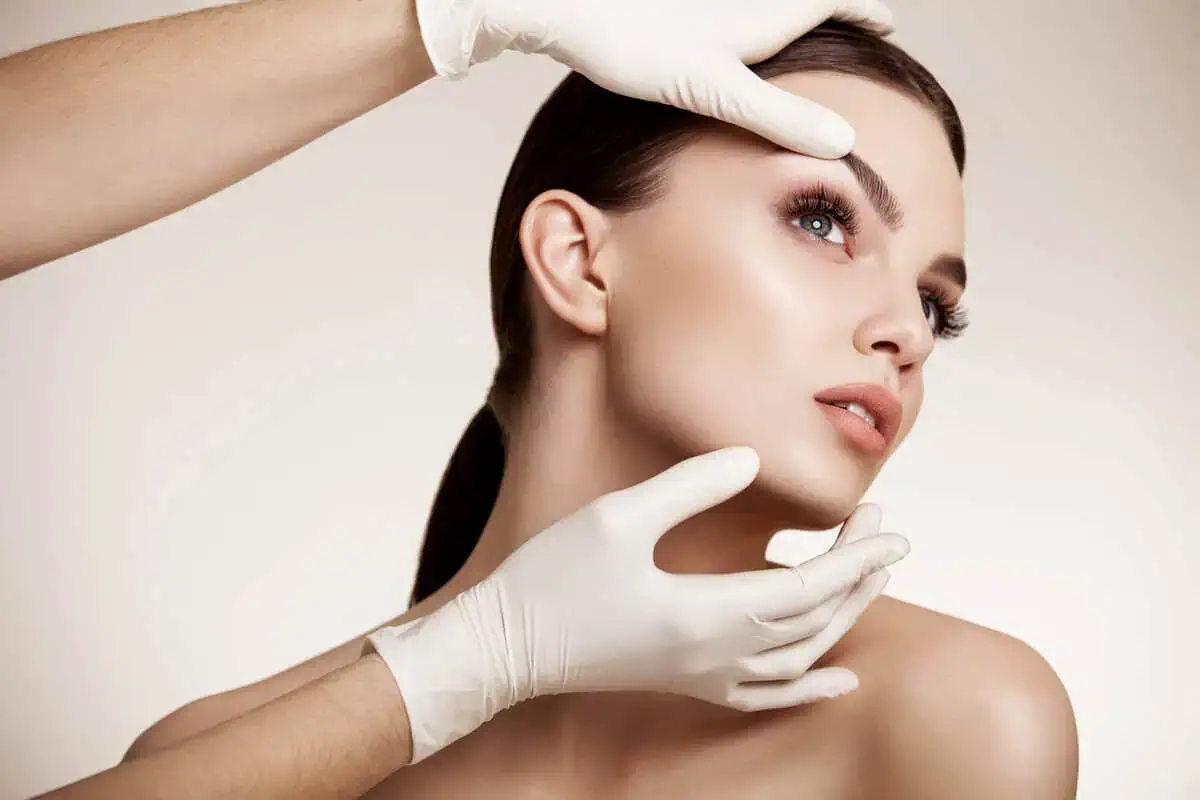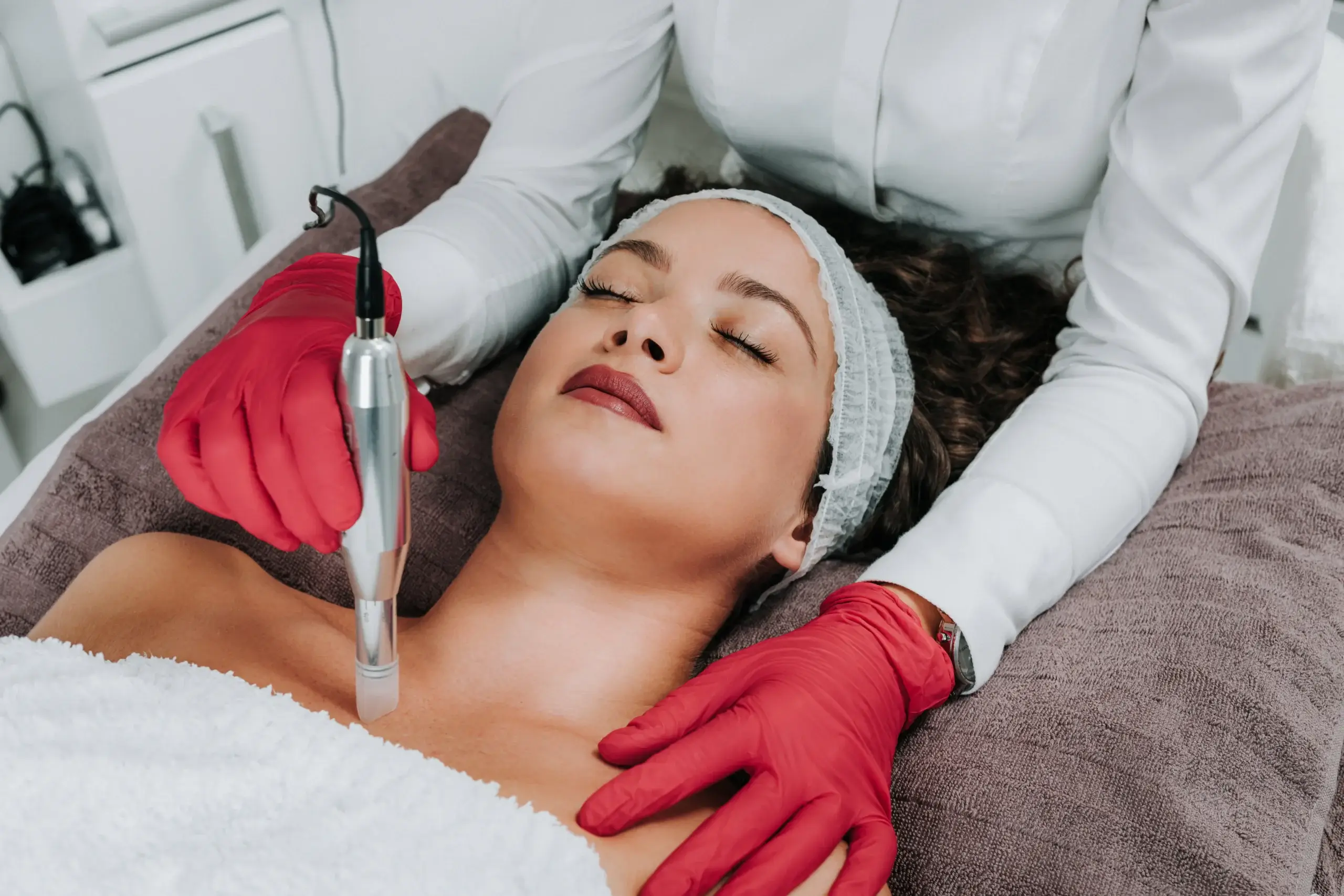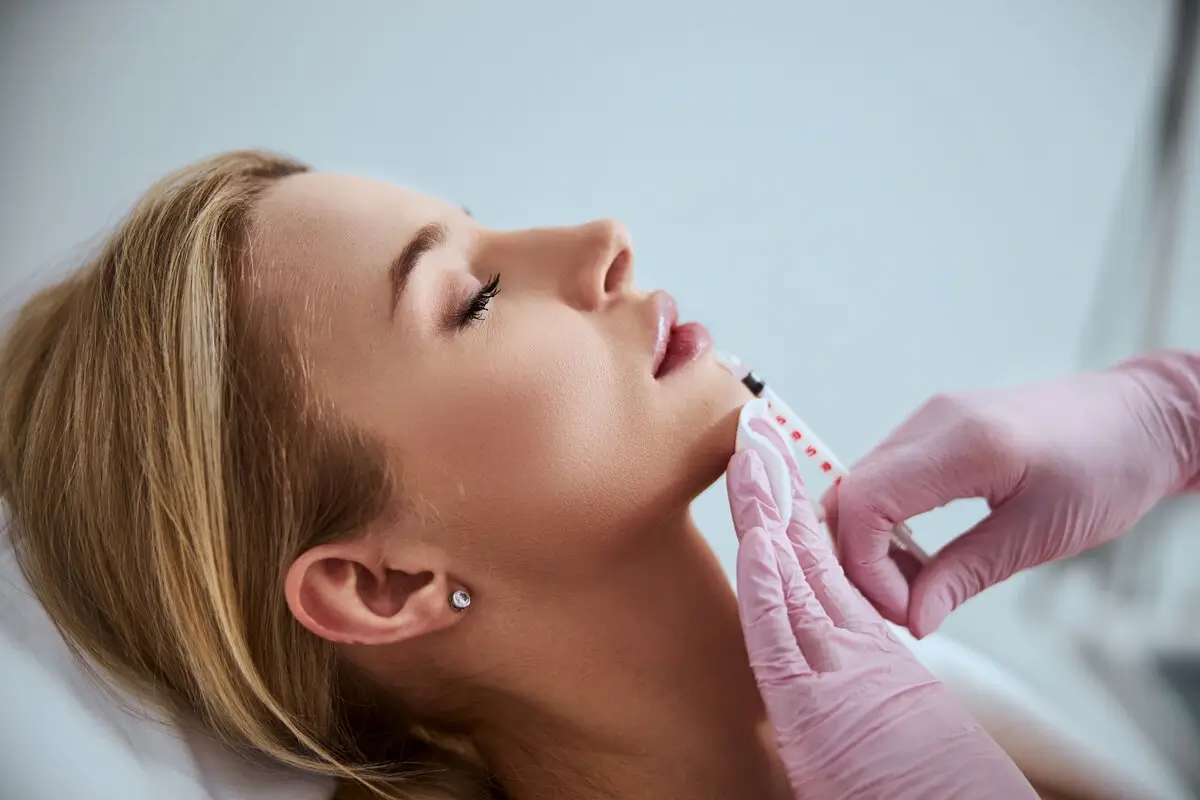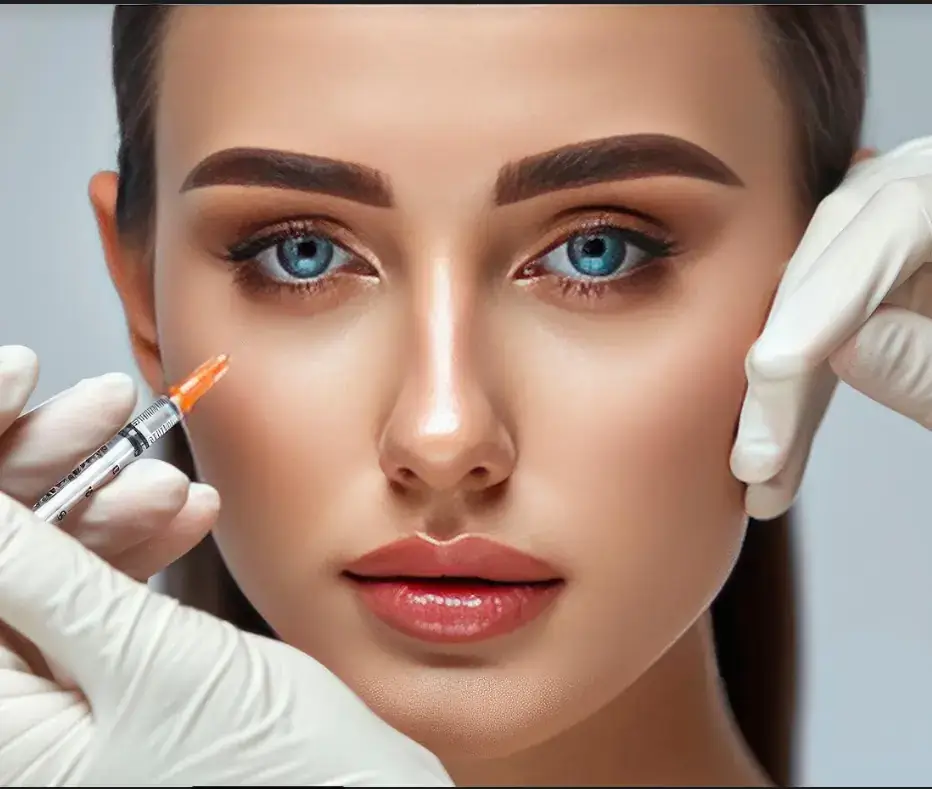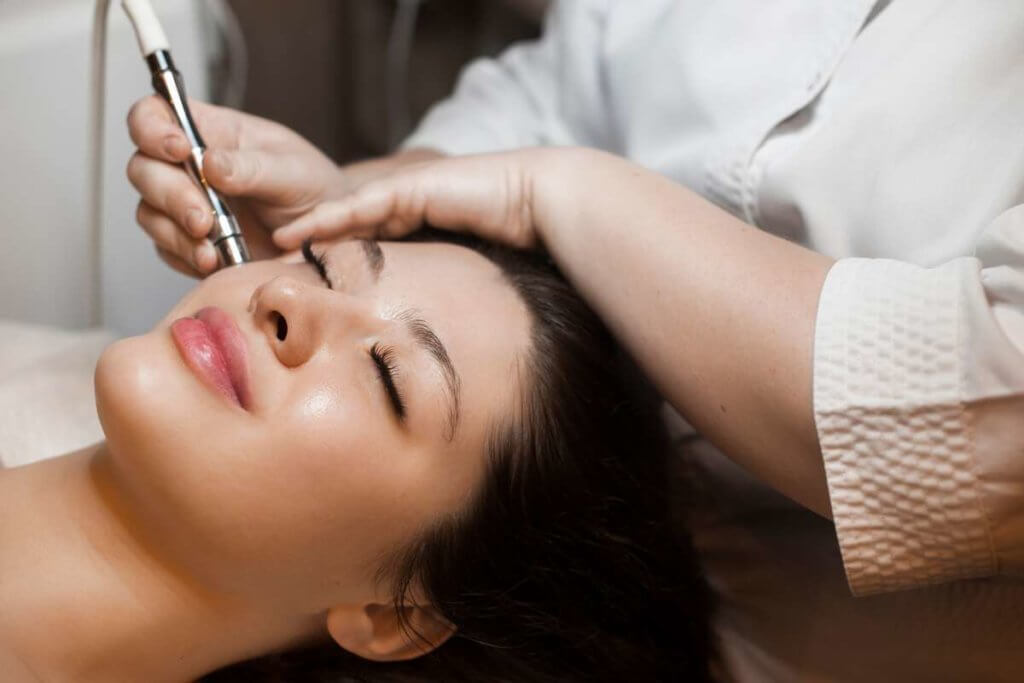
Microneedling or collagen induction therapy is a cosmetic process that uses fine, sterile needles to create controlled micro-injuries on the skin’s surface. These micro-injuries stimulate the body’s natural wound-healing process, including collagen and elastin production, two proteins responsible for maintaining the skin’s firmness and structure. As an outcome, microneedling can improve the overall texture and appearance of the skin.
Here’s how the microneedling procedure typically works:
Before the procedure, a numbing cream may be administered to the treatment area to minimize discomfort.
After this, a specialized device with fine needles is used to create small and controlled punctures in the skin. The depth and density of the hands may vary based on the specific goals and the area being treated.
As a healing response, the micro-injuries trigger the body’s natural healing processes, including producing new collagen and elastin, leading to skin rejuvenation and improved texture.
Microneedling is often used to address various skin concerns like wrinkles and fine lines, acne scars and other types of scars, pigmentation issues and uneven skin tone, stretch marks, enlarged pores, skin texture and firmness, hair loss, or scalp microneedling.
Who can use Microneedling?
Various age groups can use Microneedling as it is also generally safe for the public. People with skin aging concerns, acne scars, enlarged pores, etc., are the groups who can try Microneedling.
Microneedling is often sought by individuals looking to reduce the signs of aging and age-related skin changes. It can help stimulate collagen production, producing firmer and more youthful-looking skin. It is also effective in improving the appearance of acne scars, including atrophic or depressed scars. It can help smooth out the skin’s texture by promoting collagen regeneration.
Microneedling also addresses hyperpigmentation, melasma, and other skin tone irregularities. It helps in breaking down pigment and promoting even skin tone. It may help reduce the appearance of enlarged pores by stimulating collagen production and improving skin texture and tightness. The treatment can also be applied to areas with stretch marks, such as the abdomen, thighs, or buttocks. It can help minimize stretch marks by stimulating collagen growth in the affected areas.
Microneedling is used for overall skin rejuvenation, helping individuals achieve a more youthful and refreshed complexion. Scalp microneedling, a variation of the procedure, is used to promote hair growth in patients with certain types of hair loss. Lastly, some individuals use microneedling as a preventative measure to maintain healthy, youthful-looking skin and to address early signs of aging.
Does Microneedling affect acne?
Microneedling can positively impact acne-prone skin, but its primary role in acne is to improve the appearance of acne scars rather than treat active acne lesions. Here’s how microneedling can affect acne-related concerns:
- Acne Scars: Microneedling is often used to reduce the appearance of acne scars, particularly atrophic or depressed scars. By creating controlled micro-injuries in the skin and stimulating collagen production, microneedling can help fill in and smooth out these scar depressions. Over a series of sessions, it can improve skin texture and reduce the visibility of acne scars.
- Hyperpigmentation: In some cases, microneedling can also help with post-inflammatory hyperpigmentation (PIH), dark marks left behind after acne lesions heal. The procedure can stimulate the skin’s natural regeneration process, potentially leading to a more even skin tone and reduced pigmentation.
- Preventing Breakouts: While microneedling can help improve the appearance of acne-related concerns, it is not a direct treatment for active acne lesions. It does not address the underlying causes of acne, such as excess oil production, clogged pores, or bacterial overgrowth. If you have active acne, it’s essential to seek appropriate treatments, such as topical or oral medications, to manage and prevent breakouts.
Remember that there may be other methods to cure acne, but one may consider Microneedling.
What is new about Microneedling?
Over the years, Microneedling has evolved in several ways. Some of its noticeable changes include changes in technological advances. Let’s learn.
Some newer microneedling devices use microchannel delivery systems to enhance the absorption of topical skincare products. These devices create tiny channels in the skin, allowing for better penetration of serums or growth factors, potentially improving the overall results of the treatment. Some microneedling devices now incorporate robotics and automation for more precise and consistent treatment. These systems can reduce the margin of error and improve patient safety. The best thing is that some companies are developing at-home microneedling devices, often in the form of dermarollers, designed for consumer use! While these devices may not be as potent as professional treatments, they allow for more frequent, lower-intensity microneedling sessions.
What treatments can be customized with Microneedling?
The treatment is a versatile cosmetic procedure that can be personalized to address various skin concerns and complement other therapies. Customizing microneedling can involve adjusting the procedure’s depth, density, and technique to suit the individual’s needs. Here are some common treatments that can be customized and combined with microneedling:
- Topical Serums and Growth Factors: Microneedling can be combined with applying topical serums and growth factors. The microchannels created by microneedles allow for enhanced penetration of these products, increasing their effectiveness, which can be tailored to address specific skin issues, such as pigmentation, hydration, or anti-aging.
- Platelet-Rich Plasma (PRP) Therapy: PRP is a treatment that involves drawing a small amount of the patient’s blood, processing it to concentrate platelets, and then applying the PRP to the skin. PRP consists of growth factors that can stimulate collagen production and skin rejuvenation. When combined with microneedling, it’s often referred to as a “vampire facial” and can enhance the results of both treatments.
- Acne Scar Treatment: Microneedling can be customized to target acne scars by adjusting the needle depth and density to match the specific type and severity of the scars, which helps to smooth the skin texture and help in scar reduction.
- Stretch Mark Reduction: Microneedling can be tailored to address stretch marks, especially on the abdomen, thighs, and buttocks. Customizing the treatment parameters can help minimize the appearance of stretch marks.
- Hair Restoration: Scalp microneedling is a specialized form of microneedling used to promote hair growth in individuals with certain types of hair loss. It can be combined with topical hair growth products for enhanced results.
- Skin Tightening: Combining microneedling with radiofrequency (RF) technology can improve skin tightening. RF microneedling delivers controlled heat energy deep into the skin, stimulating collagen production and yielding a more significant tightening effect.
- Melasma and Hyperpigmentation: Customized microneedling can help address hyperpigmentation issues by stimulating skin regeneration and reducing uneven skin tone.
- Wrinkle Reduction: Microneedling can be adjusted to target fine lines and wrinkles by varying the needle depth and treatment intensity.
- Total Facial Rejuvenation: A comprehensive approach may involve customizing microneedling treatments to address multiple concerns, such as texture, tone, fine lines, and scars, in a single session.
Get the best Microneedling procedure at Savvy Derm Skin Clinic and contact them for reservations.


